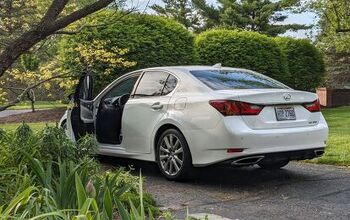Volkswagen I.D. R Sets Ludicrously Fast Qualifying Time At Pikes Peak

Volkswagen went to Pikes Peak this week for the explicit purpose of exacting revenge on the mountain, and it looks as if it may soon achieve it. The company’s I.D. R racer just set the fastest qualifying time. At 3:16.083 minutes, the electric behemoth managed to best every other vehicle qualifying on the 5-mile track track.
In fact, three-time Pikes Peak winner and Porsche factory driver Romain Dumas was 11.049 seconds quicker than the next fastest driver — Simone Faggioli in his internal-combustion Norma M20 SF PKP.
That bodes well for VW, as we already know Norma can build a good car; Dumas used an M20 to win the hill climb in 2014 and 2016. Volkswagen already has the right driver so, assuming the car doesn’t go off pace near the top of the mountain, it’s totally possible the world record could end up going to an electric vehicle.
That was a very good day for us,” said Dumas. “The I.D. R Pikes Peak is incredible. I have never experienced acceleration and power like that in a racing car. I am noticing how the car and I are becoming more and more of a unit with every kilometer.”
As of now, the world record stands at 8:13.878 (achieved in 2013 by Sébastien Loeb while piloting the Peugeot 208 T16 Pikes Peak). The electric record sits at a respectable 8:57.118 (with Rhys Millen helming Drive eO’s PP100). Still, the track remains incredibly difficult and confusing thanks to multiple switchbacks, slim margin for error, and an overwhelming length.
Volkswagen is definitely within reach of the electric record and may be able to snag the world record, too. Internal combustion vehicles lose power more quickly than EVs at higher altitudes, something the I.D. R won’t have to contend with. However, the ultra-fast qualifying run isn’t indicative of the overall time, as the middle section of the course is extremely gnarly and takes the longest to navigate.
[Image: Volkswagen]

A staunch consumer advocate tracking industry trends and regulation. Before joining TTAC, Matt spent a decade working for marketing and research firms based in NYC. Clients included several of the world’s largest automakers, global tire brands, and aftermarket part suppliers. Dissatisfied with the corporate world and resentful of having to wear suits everyday, he pivoted to writing about cars. Since then, that man has become an ardent supporter of the right-to-repair movement, been interviewed on the auto industry by national radio broadcasts, driven more rental cars than anyone ever should, participated in amateur rallying events, and received the requisite minimum training as sanctioned by the SCCA. Handy with a wrench, Matt grew up surrounded by Detroit auto workers and managed to get a pizza delivery job before he was legally eligible. He later found himself driving box trucks through Manhattan, guaranteeing future sympathy for actual truckers. He continues to conduct research pertaining to the automotive sector as an independent contractor and has since moved back to his native Michigan, closer to where the cars are born. A contrarian, Matt claims to prefer understeer — stating that front and all-wheel drive vehicles cater best to his driving style.
More by Matt Posky
Latest Car Reviews
Read moreLatest Product Reviews
Read moreRecent Comments
- Todd In Canada Mazda has a 3 year bumper to bumper & 5 year unlimited mileage drivetrain warranty. Mazdas are a DIY dream of high school auto mechanics 101 easy to work on reliable simplicity. IMO the Mazda is way better looking.
- Tane94 Blue Mini, love Minis because it's total custom ordering and the S has the BMW turbo engine.
- AZFelix What could possibly go wrong with putting your life in the robotic hands of precision crafted and expertly programmed machinery?
- Orange260z I'm facing the "tire aging out" issue as well - the Conti ECS on my 911 have 2017 date codes but have lots (likely >70%) tread remaining. The tires have spent quite little time in the sun, as the car has become a garage queen and has likely had ~10K kms put on in the last 5 years. I did notice that they were getting harder last year, as the car pushes more in corners and the back end breaks loose under heavy acceleration. I'll have to do a careful inspection for cracks when I get the car out for the summer in the coming weeks.
- VoGhost Interesting comments. Back in reality, AV is already here, and the experience to date has been that AV is far safer than most drivers. But I guess your "news" didn't tell you that, for some reason.


































Comments
Join the conversation
Wow. EVs are faster than ICEs for trips up to 3 minutes long! At least they're getting somewhere..... Now, convince Germans that the same holds true for slightly longer commutes on the Autobahn...... Back in the real world, this is the same tradeoff as seen with the Tesla class 8 rig: With an ICE, power is what adds weight. Adding range is (largely) free. With an electric driveline, range is what weights. While adding power is free. So, for short hops, electric makes sense. For drives somewhat longer than up Pikes Peak, ICE. At least until we get active highways, so the electrics don't have to carry with them their entire driving range. Then, both range and power will be "free."
The 2019 RDX was a DNF? http://livetiming.net/ppihc/